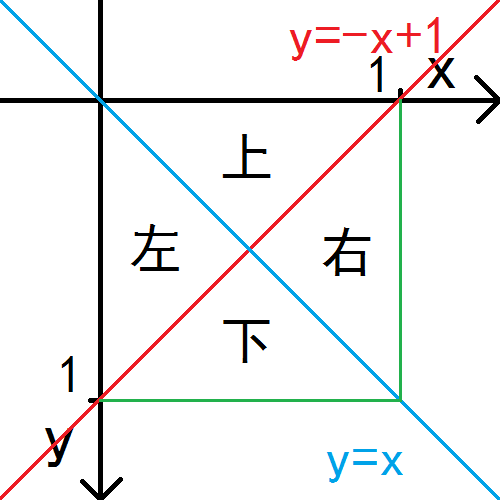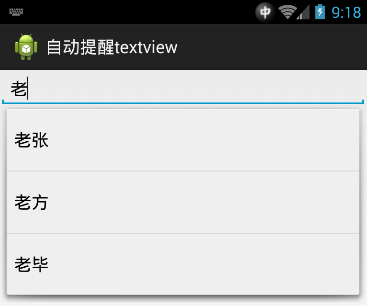編輯:關於android開發
一.使用HttpURLConnection提交數據
"get"請求
代碼:
String path = "http://地址?數據1名字=" + URLEncoder.encode(數據1,"utf-8") + "&數據2名字=" +URLEncoder.encode(數據2,"utf-8");
URL url = new URL(path);
HttpURLConnection conn = (HttpURLConnection)url.openConnection();
//這裡設置請求方式要寫為大寫
conn.setRequestMethod("GET");
conn.setConnectTimeout(5000);
int code = conn.getResponseCode();
if(code == 200){
InputStream is = conn.getInputStream();
ByteArrayOutputStream baos = new ByteArrayOutputStream();
int len = -1;
byte[] buffer = new byte[1024];
while ((len = is.read(buffer)) != -1) {
baos.write(buffer, 0, len);
}
is.close();
//這樣就得到服務器返回的數據了
result = baos.toString();
}
"post"請求
URL url = new URL(path);
HttpURLConnection conn = (HttpURLConnection)url.openConnection();
//1這裡設置請求方式要寫為大寫
conn.setRequestMethod("POST");
//設置響應時長
conn.setConnectTimeout(5000);
//2設置http請求數據的類型為表單類型
conn.setRequestProperty("Content-type","application/x-www-form-urlencoded");
String data = "數據1名字=" +URLEncoder.encode(數據1,"utf-8") + "&數據2名字=" + URLEncoder.encode(數據2,"utf-8");
//3設置給服務器寫的數據的長度
conn.setRequestProperty("Content-Length",String.valueOf(data.length()));
//4指定要給服務器寫數據
conn.setDoOutput(true);
//5開始向服務器寫數據
conn.getOutputStream().write(data.getBytes);
int code = conn.getResponseCode();
if(code == 200){
InputStream is = conn.getInputStream();
ByteArrayOutputStream baos = new ByteArrayOutputStream();
int len = -1;
byte[] buffer = new byte[1024];
while ((len = is.read(buffer)) != -1) {
baos.write(buffer, 0, len);
}
is.close();
//注意:這裡回流的編碼默認是"utf-8"的
result = baos.toString();
}
二.使用HttpClient提交數據
注:HttpClient會被內置到Android SDK中,可以不添加任何額外jar包直接使用,將文件從com文件夾復制粘貼到項目下就可以使用了
Get方式:
String path = "http://地址?數據1名字=" + URLEncoder.encode(數據1,"utf-8") + "&數據2名字" + URLEncoder.encode(數據2,"utf-8");
//可以將其過程理解為用戶浏覽器操作
//1打開浏覽器
HttpClient client = new DefaultHttpClient();
//2輸入地址
HttpGet httpGet = new HttpGet(path);
//3敲回車
HttpResponse response = client.execute(httpGet);
//獲取狀態碼
int code = response.getStatusLine().getStatusCode();
Post方式:
String path = "http://地址";
//1打開浏覽器
HttpClient client = new DefaultHttpClient();
//2輸入地址
HttpPost httpPost = new HttpPost(path);
List<NameValuePair> parameters = new ArrayList<NameValuePair>();
parameters.add(new BasicNameValuePair("數據1名字",數據1));
parameters.add(new BasicNameValuePair("數據2名字",數據1));
httpPost.setEntity(new UrlEncodedFormEntity(parameters,"utf-8"));
//3敲回車
HttpResponse response = client.execute(httpPost);
//4獲取狀態碼
int code = response.getStatusLine().getStatusCode();
三.使用AsyncHttpClient框架提交數據
該源碼可以在網上下載
將下載好的的源碼中src目錄中源碼拷貝到自己的工程的src目錄下
GET方式:
//請求路徑
String path = "http://地址?數據1名字=" + URLEncoder.encode(數據1) + "&數據2名字" + URLEncoder.encode(數據2);
AsyncHttpClient client = new AsyncHttpClient();
client.get(path,new AsyncHttpResponseHandler() {
public void onSuccess(int statusCode,Header[]headers,byte[]responseBody){
//請求成功
new String(responseBody);//返回的數據
}
public void onFailure(int statusCode,Header[]headers,byte[]responseBody,Throwable error) {
//請求失敗
String(responseBody);
}
});
POST方式:
String path = "http://地址";
AsyncHttpClient client = new AsyncHttpClient();
RequestParams params = new RequestParams();
params.put("數據1名字",數據1);
params.put("數據2名字",數據2);
client.post(path,params,new AsyncHttpResponseHandler() {
public void onSuccess(int statusCode,Header[]headers,byte[]responseBody){
//請求成功
new String(responseBody);//返回的數據
}
public void onFailure(int statusCode,Header[]headers,byte[]responseBody,Throwable error) {
//請求失敗
String(responseBody);
}
});
以上就是基本代碼了,寫的不好希望大家不要見怪,也希望和大家多多交流.
 Android快樂貪吃蛇游戲實戰項目開發教程-05虛擬方向鍵(四)四個三角形按鈕,android-05
Android快樂貪吃蛇游戲實戰項目開發教程-05虛擬方向鍵(四)四個三角形按鈕,android-05
Android快樂貪吃蛇游戲實戰項目開發教程-05虛擬方向鍵(四)四個三角形按鈕,android-05該系列教程概述與目錄:http://www.cnblogs.com/
 圓形頭像CircleImageView和Cardview使用,circleimageview
圓形頭像CircleImageView和Cardview使用,circleimageview
圓形頭像CircleImageView和Cardview使用,circleimageview效果: 圓形頭像在我們的日常使用的
 Android 下拉列表框、文本框、菜單,android列表框
Android 下拉列表框、文本框、菜單,android列表框
Android 下拉列表框、文本框、菜單,android列表框1、下拉列表框(Spinner) 項目布局 <RelativeLayout xmlns:androi
 React Native控件之PullToRefreshViewAndroid下拉刷新組件講解
React Native控件之PullToRefreshViewAndroid下拉刷新組件講解
React Native控件之PullToRefreshViewAndroid下拉刷新組件講解 (一)前言 今天我們一起來看一下PullToRefreshViewAn